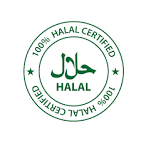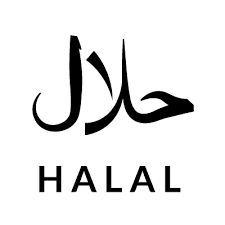Introduction
An online search of “halal logo,” “halal certification symbol,” “halal mark,” or “halal stamp” will yield thousands of logos of different variations. To halal and non-halal consumers alike, the sheer array of different arrangements of the Arabic letterings “حلال” with the various surrounding insignia (stars, circles, crescents, boxes, unique shapes, etc.) can be confusing. This AHF insight seeks to create clarity around questions such as “What is the difference between halal logos?”, “Which logo should I trust?”, “Which halal logo should I apply to my products’ label?”, and most importantly, “How should I apply a halal logo to my product?”.
Why Does a Halal Logo/Symbol Matter?
When you apply a logo on your website, product label, or marketing materials, you indicate that your brand aligns with whatever the logo imputes. For example, when you put a USDA organic logo, you impute that your product and brand align with the USDA organic programs. However, if you were to put the logo of (the fictitious) Starship Organic on your label, consumers would not be familiar with the symbol and may not believe your product to be on the same level as a USDA organic-certified product. Companies seek to apply various logos and symbols to their products to differentiate their products as being different or on standard with other products in their category. The symbols are generally used to build trust in the brand, which in turn grows the organization. Thus it is extremely important.
Just as you would be discerning and not trust Starship Organic to provide you with organic certification, it is even more important to be discerning when it comes to halal. When consumers see an organic logo they do not recognize, they may simply not trust it.
When consumers see a halal logo and mistrust it, they may construe it as haram (prohibited).
There are 5 categories of logos discussed in this AHF Insight.
1. Federal Halal Logos

MUIS Logo

JAKIM Certification Logo

MUI Halal Logo
These are logos issued by authorities formally organized under the approval and authority of the Federal Government. The government usually vests the complete authority regarding halal matters in the hands of these authorities, who are then responsible for reviewing applications and supervising and certifying companies who apply for their respective halal certification programs.
It is important to note that these logos are mostly relevant locally in the respective countries.
Notable countries with federal halal authorities:
- Singapore
- Malaysia
- Indonesia
- Saudi Arabia
- UAE
- Turkey
2. Trademarked Logos from Recognized Halal Certification Authorities
Most reputable accredited halal certification authorities have trademarked logos that are bestowed to companies that they certify. Each certification organization might have their own standards, processes, and scopes of service. However, when they are members of globally recognized councils like the World Halal Food Council, they are generally recognized across the world to have good halal standards and practices. Consumers often recognize these symbols and will trust them.
The key questions to identify here are:
- Is the organization a member of the World Halal Food Council (WHFC) or a similar organization?
- Do they have the sole rights to the halal logo?
By the merit of being a member of the World Halal Food Council, all member certifiers are obligated to mutually recognize member organization symbols. This is hugely important for B2B businesses as this effectively bestows certified companies true global acceptance.
3. Non-Recognized Certifiers
The next category of certifiers with logos that may be trademarked are not recognized to other certifiers and perhaps halal consumers. AHF advises companies to avoid these organizations and their symbols. Simply the investment made into the process and certification will not yield similar results if the same resources were invested into obtaining certification from a credible organization.
This category is primarily prevalent in Western countries where due lack of Federal regulation in halal matters, technically, the playing field is open for anyone to provide certification.
To go back to the organic analogy mentioned above, this would be akin to obtaining certification from Starship Organic, except it would be worse.
4. Generic Halal Logos

Generic halal logo

Halal stock image

Halal logo
This is by far the most detrimental logo a brand can place on its label. Not only do certifiers like AHF reject such logos (if a company were to try to sell a product to an AHF client), they are a form of self-certification that exposes a company to serious risk. Self-certification is not suitable for food safety, nor should it be for halal. It is better to place no logo than a generic halal logo.
AHF strongly advises consumers to be careful when assuming a product with a generic logo is halal. AHF encourages consumers to actively demand that companies obtain an independent halal certification.
An AHF insight is dedicated to this topic: The Crisis of the Generic Halal Logo – AHF
5. The AHF Halal Logo


The AHF halal logo and it’s underlying standards signify to 2 billion halal consumers that the product is halal. From pharmaceuticals and food items to packaging materials, the logo signals consumers that the company applying the logo has undergone a comprehensive, internationally recognized, complete, and successful certification process and has achieved AHF halal certification.
AHF’s latest standards include “universal acceptability” as a core tenant. The approach is such that every halal consumer worldwide would trust the AHF logo. That way, when consumers see the logo, they will never have to question, “Is this really halal?”.
As members of the World Halal Food Council, the AHF logo is also globally recognized, and all other members of the council recognize AHF’s halal logo. Furthermore, authorities in the USDA are also familiar with the AHF halal logo. You can learn more about AHF’s halal recognitions and accreditations here: International Halal Accreditation & Recognition.
Which Halal logo to apply to your label?
If you want universal acceptability and seek to build maximum global trust in your product and brand you should apply the American Halal Foundation (AHF) halal logo. On the other hand, you should avoid generic halal logos at any cost.
How to apply the Halal Logo to your label?
If you seek to apply a halal logo/symbol to your product, you will need apply for halal certification. After the completion of the certification process, your account executive will send you a logo packet, and you may apply the logo to your label in accordance with the Logo Usage Policy.

Backed by more than 60+ years of combined experience in global halal standards and practices, the Halal Foundation Editorial Team is dedicated to delivering insightful, accurate, and practical content that empowers businesses and consumers to navigate the halal landscape.




